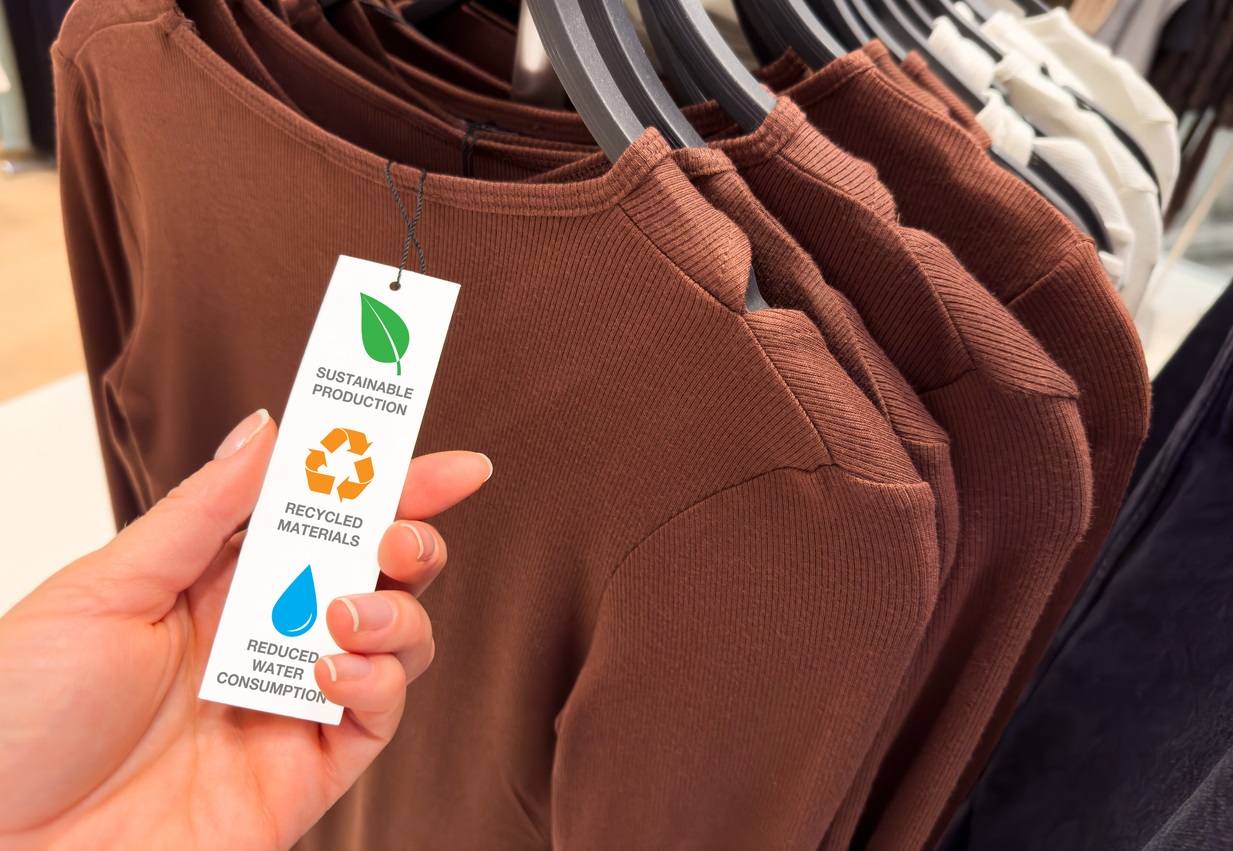How to buy and sell clothes online
Are you looking for a way to make some extra cash, declutter your wardrobe, and contribute to a more sustainable fashion industry? Buying and selling clothes online might just be the perfect solution. Find the best sites and apps to start selling clothes online or consider setting up your own online store.
Content:
- The online clothing market
- Setting up your online shop
- Buying clothes online: What to look for
- Sustainable fashion and circular economy
- Social media and online clothing sales
- Niche platforms and collaborative initiatives
Short summary
- Navigate the online clothing market to make informed decisions.
- Utilize platforms such as Etsy, Vinted and Depop for high street brands and designer resale sites like Vestiaire Collective or The RealReal for pre-owned designer clothes.
- Set up an optimized shop with a strong brand identity, effective pricing strategies and efficient selling process while providing great customer service in order to maximize sales and profits.
Looking for ecommerce software to start selling in Europe? Webador and Shopify are platforms that are well optimized for cross-border ecommerce.
Navigating the online clothing market
The online clothing market is vast, with various types of stores catering to different needs and preferences. From high-end designer resale and vintage and unique pieces to high street and casual brands, there is something for everyone.
High-end designer resale
If you have luxury designer items gathering dust in your wardrobe, selling them on high-end designer resale platforms can be an excellent way to make some extra cash. Vestiaire Collective, Tradesy, The RealReal, and Rebelle are just a few of the platforms that specialize in selling pre-owned designer garments online.
It is crucial to research each platform and choose one that suits your needs.
With varying commission rates and selling processes, it is crucial to research each platform and choose the one that best suits your needs and the pieces you are selling. Remember, high-end items from brands like Louis Vuitton or Gucci can fetch a premium price, so it is worth investing some time to find the right platform for your items.
Vintage and unique pieces
For those with a penchant for vintage and unique pieces, platforms like Etsy and Vinted are perfect for selling such items. Etsy, known for its focus on handmade and vintage items, requires that vintage clothing items be at least 20 years old.
Vinted, on the other hand, is an online marketplace catering to a wide range of audiences, including students, young people, and even some older groups. Keep in mind that each platform has its own fees and commission structure, so be sure to read the fine print and choose the one that best aligns with your selling goals.
High street and casual brands
If high street clothes make up the bulk of your wardrobe, platforms like Depop, ASOS Marketplace, and Facebook are ideal for selling your unwanted clothes. Depop is particularly popular among younger users and is known for its thriving community of sellers and buyers of popular brands like Nike, Adidas, and Zara.
There are many platforms and marketplaces to sell your high street brands.
ASOS Marketplace, on the other hand, requires sellers to have at least 15 high-quality items listed and presented on a model. Lastly, Facebook Marketplace is a versatile and free platform that allows you to sell items directly to users in your local area, making it a convenient option for those looking to avoid shipping costs.
Setting up your online store
With so many platforms available to sell your things on, you could easily just complete the whole selling process there. If you want to reach a larger audience, you could also create your own website with ecommerce software. In that way, you can start selling clothes in your own online clothing store. By carefully choosing a software platform, curating your inventory, and creating a unique branding and store design, you will be well on your way to launching a successful online clothing store.
Looking for ecommerce software to start selling in Europe? Webador and Shopify are platforms that are well optimized for cross-border ecommerce.
Choosing an ecommerce platform
Selecting the right platform for your online shop is a crucial step in ensuring its success. Some popular options include Shopify, WooCommerce, Wix, Squarespace, and BigCommerce, each offering different features and pricing plans to suit your needs.
Consider ease of use, scalability and payment options when choosing a software provider.
When selecting ecommerce software, consider factors such as ease of use, scalability, payment processing options, customer support, and security. Additionally, research each platform’s transaction fees and commission rates to ensure you are making a financially sound decision for your business.
Curating your inventory
Once you have chosen your platform, it is time to curate your inventory. Start by determining the characteristics of your target audience and their shopping habits. Select products that are relevant to your target market and consider trends, quality, and price when choosing the items to sell.
Keep track of your top-selling items and use this data to inform your inventory decisions, ensuring you always have the right products in stock. Additionally, consider implementing an inventory management system to help you keep track of your stock levels and make informed decisions about replenishing items.
Branding and store design
Creating a unique brand identity is essential for attracting and retaining customers. Start by defining your brand message and personality, and then select a business name, slogan, colors, font, and logo that accurately reflect your brand’s essence.
Make sure that your website, social media and marketing materials are consistent.
Ensure consistency across your website, social media, and marketing materials by using your logo, colors, and font in all aspects of your branding. By standing out from the competition with a strong brand identity and store design, you will increase customer loyalty and drive sales.
Looking for ecommerce software to start selling in Europe? Webador and Shopify are platforms that are well optimized for cross-border ecommerce.

Selling tips and strategies
Successfully selling online requires a combination of effective pricing, enticing listings and descriptions, and efficient shipping and handling. In this section, we will provide you with valuable tips and strategies to help you maximize your sales and profits while keeping your customers satisfied.
Pricing your items
A crucial aspect of selling clothes is setting the right price for your clothing items. Start by researching the market and competition to set competitive prices. Consider factors such as the item’s condition, brand, and demand when determining the price.
Setting an appropriate price for your items will help you generate a profit.
You can also utilize pricing methods such as cost-plus pricing or the keystone method to help you establish your prices. Remember, setting an appropriate price for your items will ensure that they sell quickly and generate a profit.
Listing and descriptions
To list items, start by crafting informative and captivating titles, while ensuring accuracy and helpfulness in your descriptions. Utilize search engine optimization (SEO) techniques to help your listings rank higher in search results and make them more visible to potential buyers.
Additionally, provide clear and concise descriptions of your items, incorporating bullet points for features and other properties. Lastly, strategically position well-researched keywords in your titles to boost visibility and sales.
Shipping and handling
After selling your items, you will need to ship them to your customers. Managing shipping costs and handling processes efficiently can have a significant impact on your profit margins and customer satisfaction.
Research the fees and shipping options of your sales platform.
Research the fees and shipping options for various online platforms to ensure you are offering the best solution for your customers. By optimizing your shipping and handling processes, you can keep your customers happy and boost your online clothing sales.
Buying clothes online: What to look for
Before purchasing clothing online from a supplier or seller, it is essential to carefully evaluate the item’s condition. Look for any signs of wear and tear, such as spots, sweat stains, snags, holes, seams, or pilling.
Additionally, read reviews to gain insight into the supplier’s quality and any potential issues. By thoroughly assessing them, you can avoid disappointment and ensure you are getting the best value for your money. High quality items are also more likely to be sold in your online store.
You can buy larger quantities of clothes at a wholesaler.
If you want to buy items in larger quantities, you can purchase it at a wholesaler. Wholesalers usually handle a minimum order, which means that you have to buy large quantities right away. A wholesaler wants to see that you dare to invest, because that can indicate that your shop will be successful. Be careful with buying too many items, you do not want to get leftover inventory.
Sustainable fashion and circular economy
Embracing sustainable fashion and the circular economy is more than just a trend; it is a responsible way to shop and sell clothes.
Environmental impact
Sustainable fashion and circular economy practices aim to reduce the adverse environmental effects of the fashion industry, such as pollution, water usage, carbon emissions, and waste. By reusing, recycling, and upcycling garments, you can minimize your environmental footprint.
Cost savings
The circular economy model in fashion can offer significant cost savings by utilizing recycled inputs. This minimizes exposure to raw material prices when you buy clothes for your online store. Additionally, sustainable methods can stimulate innovation and provide a safeguard against supply-chain disruptions.
Supporting local and small businesses
By participating in sustainable fashion and circular economy practices, you can support local and small businesses, generate employment opportunities, and stimulate local economies. This, in turn, minimizes the environmental impact of transportation and promotes a more sustainable fashion industry.

Social media and online clothing sales
In the world of online clothing sales social media plays a crucial role, providing new platforms and promotional opportunities for sellers.
Instagram Shops
Instagram Shops are customizable digital storefronts where online sellers can showcase and sell their products directly within the app. By utilizing Instagram Shops, you can expand your reach, boost sales, and foster brand loyalty. Features such as product tagging, product recommendations, and checkout on Instagram make it a convenient and effective platform for online retailers.
Facebook Marketplace
Another popular platform is Facebook, offering a free and easy-to-use interface for buying and selling items within your local community. While it might not be as secure as other online marketplaces, Facebook Marketplace is an excellent resource for discovering unique items to resell. Be sure to stay vigilant for potential scams and review the seller’s ratings before making a purchase.
Influencer collaborations
Your brand can also start partnerships with social media influencers, wherein the influencer creates and posts content on their social media channels to promote your brand’s offerings. This can help expand your reach, raise brand recognition, and drive sales.

Niche platforms and collaborative initiatives
Beyond mainstream platforms and social media channels, niche platforms and collaborative initiatives offer unique opportunities for online sellers.
Thrift+ for Browns
Thrift+ for Browns is a donation service offering customers the opportunity to donate used clothes in exchange for Browns credit. This joint venture between luxury retailer Browns and secondhand seller Thrift+ allows customers to give their pre-owned clothing a new life while earning credit towards future purchases at Browns. The service is simple and easy to use. Customers can drop off their old clothes at any Browns store or use the Thrift+ app to arrange for a pick-up.
COS Resell
COS Resell is a digital resale platform launched by COS, a fashion brand owned by the H&M Group. This platform enables shoppers to purchase and resell used clothes from COS. Sellers receive 100 percent of the sale price. The funds are then released when the item is delivered and the customer has confirmed and rated it.
The platform is designed to be easy to use, with a simple listing process and a secure payment system. It also offers a range of features to help buyers and sellers, such as a messaging system, ratings and reviews.
Zara Resell
Zara Resell is a feature that offers customers the ability to securely resell their pre-owned Zara items through the company’s website. By providing a platform for customers to resell and purchase their old clothes, Zara Resell promotes sustainability and gives customers the opportunity to extend the life of their clothing.

Managing returns and customer service
After making your first sales, you will also start receiving returns. What will your policy regarding returns be? And how will you manage customer complaints?
Return policies
Creating an effective return policy is essential for to ensure customer satisfaction. Be sure to clearly outline the procedure for returning items, specify the types of items that can be returned, and provide a timeline for returns.
Make sure your return policy is easily accessible.
Additionally, include information regarding any applicable restocking fees, shipping fees, or other fees associated with returns. Make your return policy easily accessible and ensure the language is simple and easy to understand.
Handling disputes
Addressing disputes is an inevitable part of the process of an online clothing store. Respond promptly to customer inquiries and resolve issues in a timely manner. Having a clear policy in place for handling disputes, such as a refund policy or a dispute resolution process, can help facilitate a smooth resolution.
Summary
This page tries to outline the process of buying and selling clothes, covering everything from navigating the online clothing market and setting up your online shop to managing returns and customer service. With the rise of sustainable fashion and the circular economy, there has never been a better time to start selling clothes online. Whether you are looking to declutter your wardrobe, make some extra cash, or contribute to a more sustainable fashion industry: these tips and strategies will set you on the path to success!
Frequently asked questions
Frequenstly asked questions about buying and selling clothes online are:
Can you buy and sell clothes online?
Yes, you can sell and buy clothes online. Online selling platforms provide multiple ways for sellers to showcase their items to potential buyers, so it is easy to make an online store to sell your clothes. However, before buying or selling clothes online, make sure you read the terms and conditions of the website you are using. Starting your own online store is a possibility as well.
How to sell clothes online in the UK?
To successfully sell clothes online in the UK, create an account on online marketplaces such as Depop, Vinted, eBay, ASOS Marketplace, Preloved, Facebook, Etsy, and Rebelle. Offering quality products, competitive pricing, and excellent customer service will help maximize your sales.
Is Vinted or Depop better?
It seems that the overall opinion is that Depop may be better suited to more serious and experienced sellers, whereas Vinted could be an ideal option for casual users who are looking to minimize fees. Ultimately, it really depends on what you are hoping to achieve.


